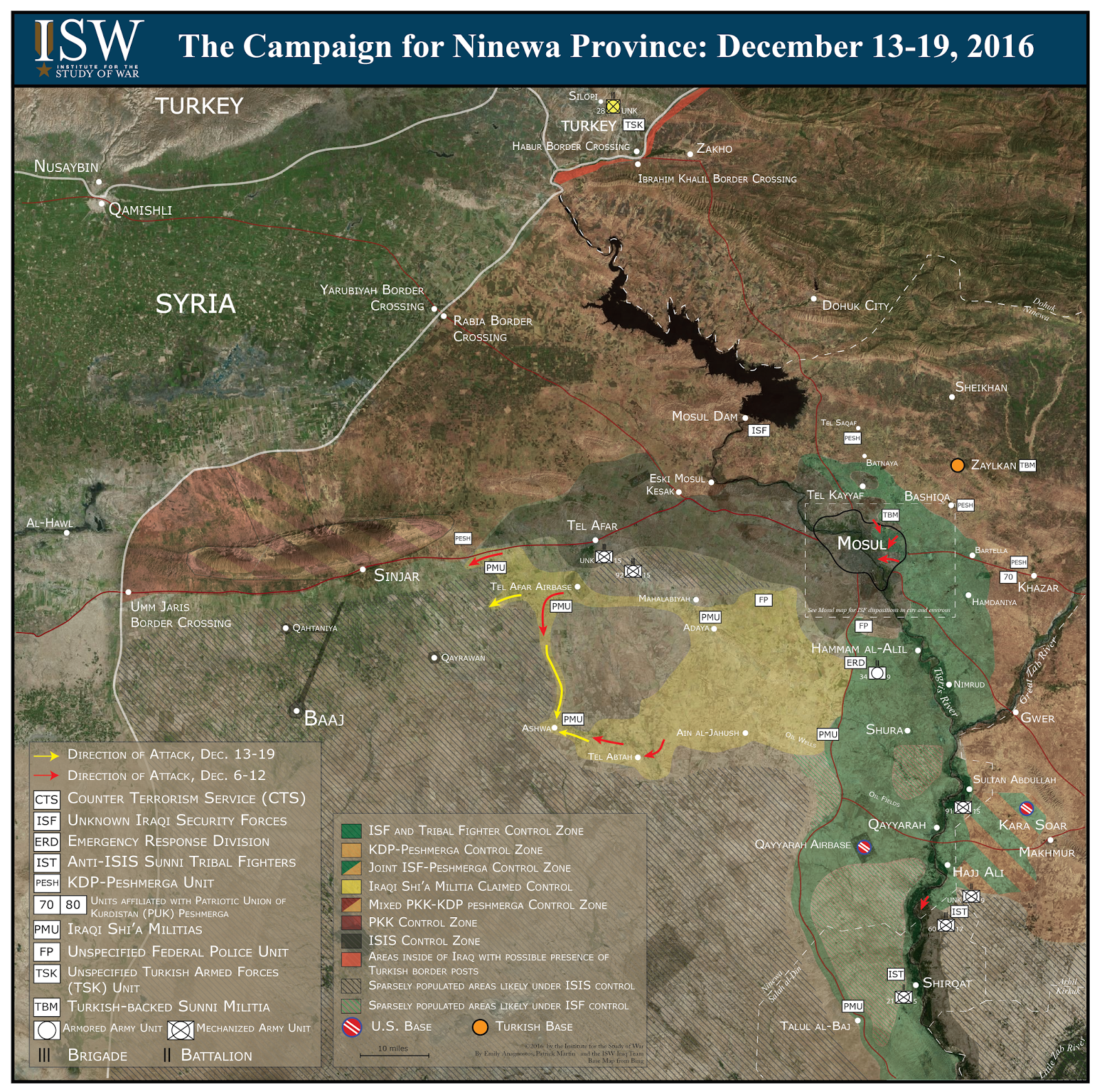Operations in eastern Mosul largely paused from December 13 to 19 likely in order to stem the growing casualties taken by the Iraqi Security Forces (ISF) and to regroup before pushing into central Mosul. Meanwhile, the Popular Mobilization continued its push west, connecting its parallel lines of effort when it recaptured the north-south road between the Tel Afar Airbase and the southern town of Ashwa on December 13.
Operations in eastern Mosul largely paused from December 13 to 19. The Counter Terrorism Service (CTS), which is bearing the brunt of the operation, is facing a degree of attrition that risks the successful completion of anti-ISIS operations in Mosul. Senior U.S. military officials reported that the U.S.-trained Golden Brigade,the first of three brigades of the CTS, is facing a 50% casualty rate and could be rendered combat ineffective in a month if the rate remains constant. The CTS has deliberately slowed operations in eastern Mosul in order to reduce the rate of attrition, and the ISF announced it will begin to rely more on artillery and precision airstrikes to target ISIS militants in response. These new tactics, however, will likely increase civilian casualties because ISIS militants continue to use Mosul’s civilian population as human shields. The ISF will either be forced to heavily deploy its assets from other areas of the country to match the capability of the elite CTS forces or to call up non-acceptable partners, such as the Popular Mobilization, to complete the current operation in Mosul.
The pause in eastern Mosul may also align with a need to regroup before the ISF pushes into central Mosul. Operations in northeastern Mosul, under the efforts of the CTS, have reached the Khosr River, a tributary river that feeds into the Tigris and bisects northeastern Mosul. The CTS will need to regroup before bridging the river in order to resolve the logistics of the crossing, notably for heavy equipment. The CTS will also need to plan for how to approach these new neighborhoods, especially the University of Mosul, a logistical hub for ISIS.Unconfirmed sources report that ISIS destroyed the campus and withdrew, however the “scorched earth” tactic, if true, will still slow the ISF’s advance and leave it open to ISIS counterattacks. ISIS will resist the CTS’s advance further into central Mosul and towards the government center. The CTS will need to carefully assess how to secure this area in light of its reduced numbers and limited ability to call in reinforcements.
Shi’amilitias operating in the western Ninewa desert connected their northern and southern lines of effort by retaking the Tel Afar-Ashwa road on December 13. The militias have been operating on two separate axes, the first stretching west from Tel Afar along the Sinjar highway, in the northern desert, and the second stemming west from Qayyarah, moving through key villages of Ain al-Jahush,Tel Abtah, and Ashwa in the southern desert. Units connected these lines of effort on December 13 when they cleared theroadstretching between Tel Afar and Ashwa, giving the operations a greater ability to move forces and equipment as they continue to progress west.


